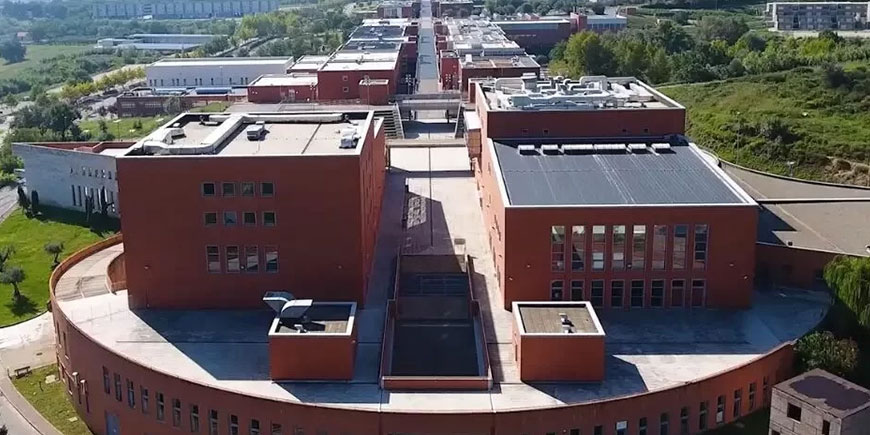Unical in prestigious ranking with 74 researchers selected based on quality and impact of their publications.
There are 74 researchers in the prestigious ranking.
The University of Calabria consolidates its presence in the prestigious “World’s Top 2% Scientists” ranking, drawn up by Stanford University, which selects the excellence of the international scientific community by assessing the publications, citations and impact of the studies of around 9 million female scientists.
This further recognition demonstrates the excellence of Unical’s teaching staff and contributes to strengthening the university’s reputation on the international scientific scene.
The ranking
La World’s Top 2% Scientists ranking elaborata dalla Stanford University, celebre università californiana, in collaborazione con Elsevier, utilizza dati estratti da Scopus – uno dei più vasti ed aggiornati database di abstract e citazioni al mondo – e valuta la produzione scientifica di milioni di ricercatori in tutto il globo.
It covers almost all technical and scientific disciplines, but not the social sciences and humanities, with the exception of a few areas of a bibliometric nature (e.g. psychology).
Out of around 9 million researchers surveyed, the ranking identifies the top 2%, distinguished by quality, quantity and dissemination of publications within the scientific communities, and provides two separate lists: one covering the entire career (period 1996-2023), the other taking into account the impact of the research produced in the last year (with reference to citations received in 2023).
The University of Calabria appears 74 times in the latest ranking published by Stanford, which also includes some lecturers who are no longer at Unical and who have linked much of their scientific production to the Rende campus.
The 74 researchers
Below are the names listed for Unical:
- Agriculture, fisheries & forestry – Monica Rosa Loizzo
- Biomedical research – Giuseppe Genchi, Cesare Indiveri
- Built environment & design – Domenico Mundo
- Chemistry – Roberta Cassano, Jessica Ceramella, Giuseppe Cirillo, Filomena Conforti, Manuela Curcio, Renato Dalpozzo, Bartolo Gabriele, Fedora Grande, Domenico Iacopetta, Mariangela Marrelli, Francesco Menichini, Janos B. Nagy, Francesco Neve, Ilaria Ortensia Parisi, Francesco Puoci, Maria Stefania Sinicropi, Rosa Tundis
- Clinical medicine – Daniela Bonofiglio, Rosamaria Lappano, Marcello Maggiolini, Ida Perrotta, Sonia Trombino, Gianluigi Zaza
- Earth & environmental sciences – Salvatore Critelli
- Economics & business – Laura Eboli
- Enabling & strategic technologies – Piero Bevilacqua, Luigi Bruno, Luigino Filice, Petronilla Fragiacomo, Carmine Maletta, Fabio Mazza, Luciano Ombres, Antonio Tursi
- Engineering – Giuseppe Carbone, Alessandro Casavola, Sudip Chakraborty, Giuseppe Cocorullo, Enrico Conte, Efrem Curcio, Stefano Curcio, Esteban Garzon, Fabrizio Greco, Domenico Grimaldi, Francesco Lamonaca, Marco Lanuzza, Paolo Lonetti, Francesco Longo, Raffaele Molinari, Domenico Umbrello
- Historical studies – Mauro Francesco La Russa
- Information & communication technologies – Fabrizio Angiulli, Sandra Costanzo, Alfredo Cuzzocrea, Floriano De Rango, Giancarlo Fortino, Georg Gottlob, Raffaele Gravina, Sergio Greco, Antonio Iera, Nicola Leone, Giuseppe Pirrò, Pasquale Pace, Domenico Saccà, Claudio Savaglio, Domenico Talia
- Mathematics & statistics – Gennaro Infante
- Physics & astronomy – Vincenzo Carbone, Gianluca Gatti, Nino Russo
- Psychology & cognitive sciences – Rocco Servidio.
The criteria for ranking
Researchers are classified into 22 scientific fields and 174 sub-fields according to the standard Science-Metrix classification. For each researcher, citations and the relative h-index, an index measuring an author’s productivity and scientific impact, are assessed based on both the number of publications and the number of citations received.
In addition, a c-score is assigned, a composite indicator that focuses on relevance rather than simply the number of publications and includes information on co-authorship and author positions (single, first, last author).
The World’s Top 2% Scientists also indicates the specific scientific fields of activity, from acoustics to zoology, and the relative ranking according to a classification of the author’s profile, obtained using advanced machine learning techniques to produce results that are comparable between different scientific fields.
See the complete ranking by clicking here.


